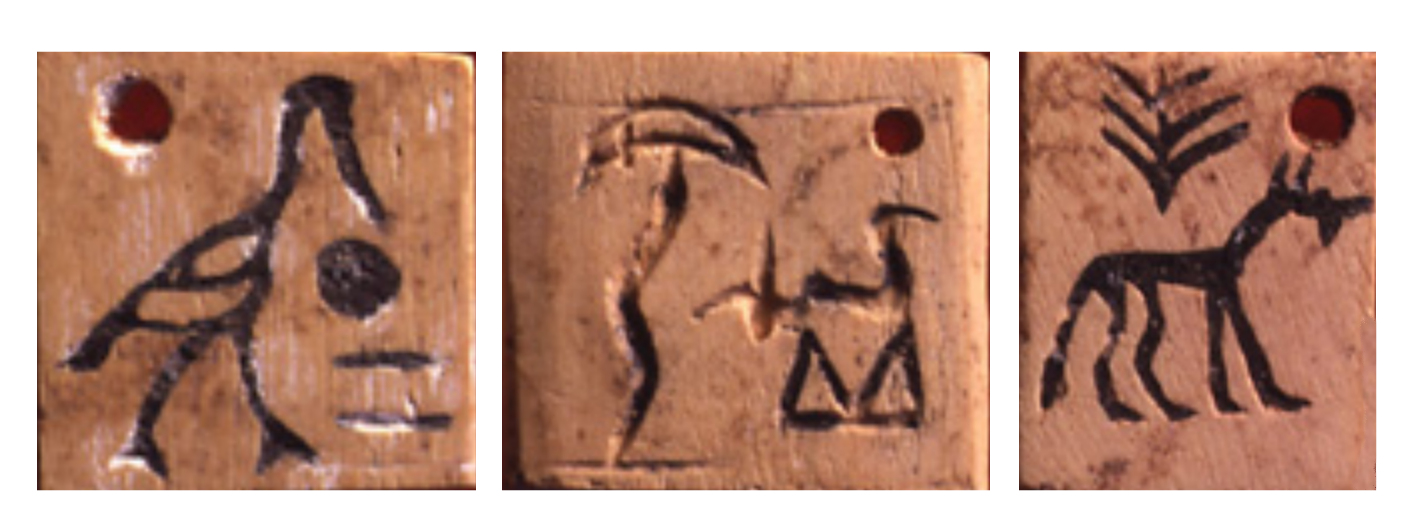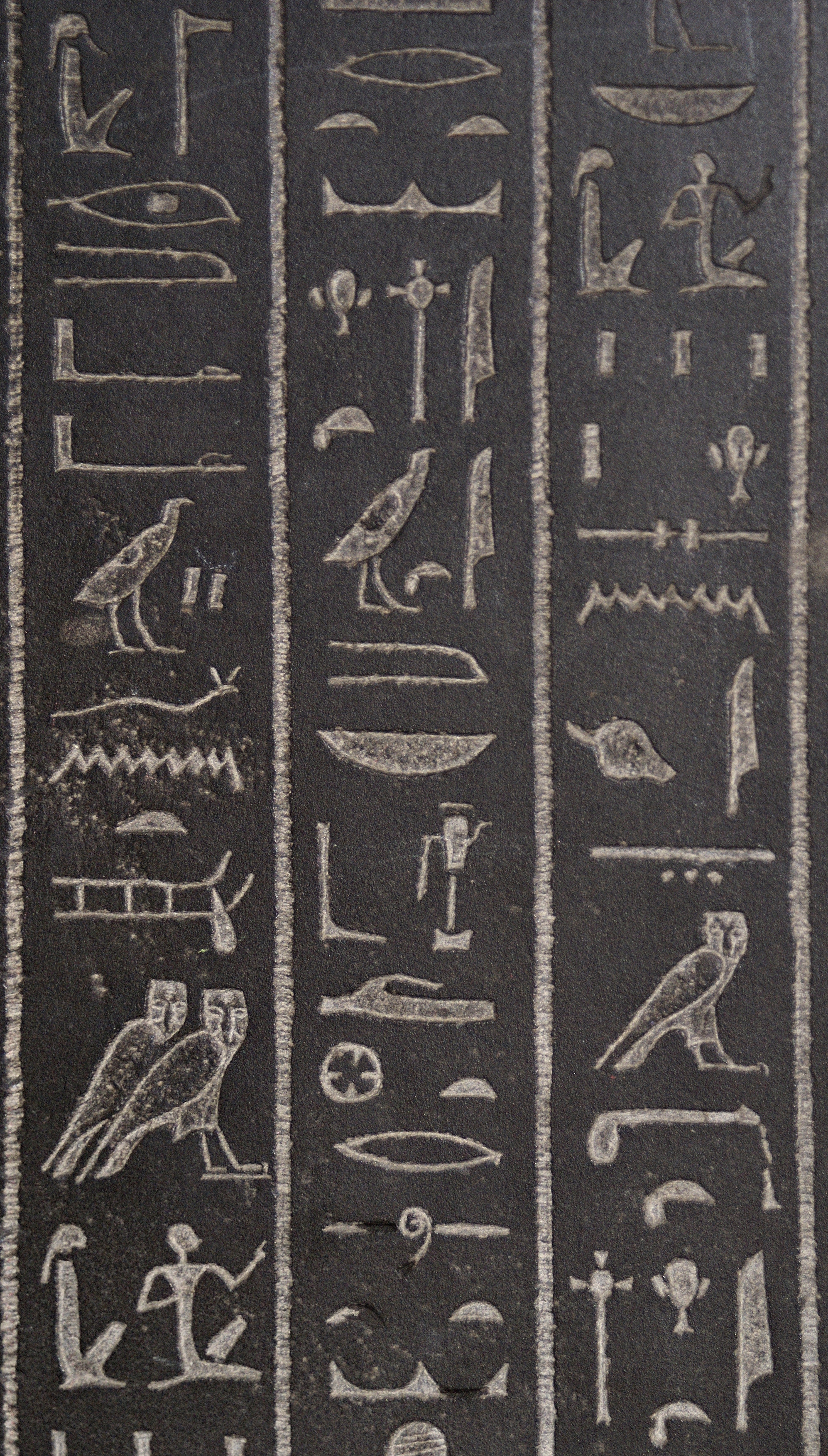|
Illustrated Hieroglyphics Handbook
The ''Illustrated Hieroglyphics Handbook'' is part of a new genre of books focused on Egyptian hieroglyphs. The book is a graphics based book with four to seven word examples of each Egyptian hieroglyph; the words are graphically explained for each component of the word, and links to the other entries in the book; each hieroglyph is in ''extreme-artistic-detail'' and can vary for each hieroglyph, word-to-word. The determinatives ending a word are explained, (if there is one). Some determinatives are specific to individual trades, i.e. metallurgy, for example and are not in the Gardiner's sign list of Egyptian hieroglyphs. Book layout The core of the book is based on the Egyptian language, with a chapter each for: *Egyptian uniliteral signs, U1 to U26 * Egyptian biliteral signs, B1 to B83 *Egyptian triliteral signs, T1 to T30 Each hieroglyph is examined with: ''Phonetics and Writing'', (the four to seven example graphically displayed words), and, ''Semantics''. The semantics may ... [...More Info...] [...Related Items...] OR: [Wikipedia] [Google] [Baidu] |
Egyptian Language
The Egyptian language, or Ancient Egyptian (; ), is an extinct branch of the Afro-Asiatic languages that was spoken in ancient Egypt. It is known today from a large corpus of surviving texts, which were made accessible to the modern world following the decipherment of the ancient Egyptian scripts in the early 19th century. Egyptian is one of the earliest known written languages, first recorded in the hieroglyphic script in the late 4th millennium BC. It is also the longest-attested human language, with a written record spanning over 4,000 years. Its classical form, known as " Middle Egyptian," served as the vernacular of the Middle Kingdom of Egypt and remained the literary language of Egypt until the Roman period. By the time of classical antiquity, the spoken language had evolved into Demotic, and by the Roman era, diversified into various Coptic dialects. These were eventually supplanted by Arabic after the Muslim conquest of Egypt, although Bohairic Coptic ... [...More Info...] [...Related Items...] OR: [Wikipedia] [Google] [Baidu] |
Egyptian Hieroglyphs
Ancient Egyptian hieroglyphs ( ) were the formal writing system used in Ancient Egypt for writing the Egyptian language. Hieroglyphs combined Ideogram, ideographic, logographic, syllabic and alphabetic elements, with more than 1,000 distinct characters.In total, there were about 1,000 graphemes in use during the Old Kingdom period; this number decreased to 750–850 during the Middle Kingdom, but rose instead to around 5,000 signs during the Ptolemaic period. Antonio Loprieno, ''Ancient Egyptian: A Linguistic Introduction'' (Cambridge: Cambridge UP, 1995), p. 12. Cursive hieroglyphs were used for Ancient Egyptian literature, religious literature on papyrus and wood. The later hieratic and demotic (Egyptian), demotic Egyptian scripts were derived from hieroglyphic writing, as was the Proto-Sinaitic script that later evolved into the Phoenician alphabet. Egyptian hieroglyphs are the ultimate ancestor of the Phoenician alphabet, the first widely adopted phonetic writing system. Moreov ... [...More Info...] [...Related Items...] OR: [Wikipedia] [Google] [Baidu] |
Graphics
Graphics () are visual images or designs on some surface, such as a wall, canvas, screen, paper, or stone, to inform, illustrate, or entertain. In contemporary usage, it includes a pictorial representation of the data, as in design and manufacture, in typesetting and the graphic arts, and in educational and recreational software. Images that are generated by a computer are called computer graphics. Examples are photographs, drawings, line art, mathematical graphs, line graphs, charts, diagrams, typography, numbers, symbols, geometric designs, maps, engineering drawings, or other images. Graphics often combine text, illustration, and color. Graphic design may consist of the deliberate selection, creation, or arrangement of typography alone, as in a brochure, flyer, poster, web site, or book without any other element. The objective can be clarity or effective communication, association with other cultural elements, or merely the creation of a distinctive style. Graphic ... [...More Info...] [...Related Items...] OR: [Wikipedia] [Google] [Baidu] |
Determinative
A determinative, also known as a taxogram or semagram, is an ideogram used to mark semantic categories of words in logographic scripts which helps to disambiguate interpretation. They have no direct counterpart in spoken language, though they may derive historically from glyphs for real words, and functionally they resemble classifiers in East Asian and sign languages. For example, Egyptian hieroglyphic determinatives include symbols for divinities, people, parts of the body, animals, plants, and books/abstract ideas, which helped in reading but were not pronounced. Cuneiform In cuneiform texts of Sumerian, Akkadian and Hittite languages, many nouns are preceded or followed by a Sumerian word acting as a determinative; this specifies that the associated word belongs to a particular semantic group.Edzard, 2003 These determinatives were not pronounced. In transliterations of Sumerian, the determinatives are written in superscript in upper case. Whether a given sign is a m ... [...More Info...] [...Related Items...] OR: [Wikipedia] [Google] [Baidu] |
Metallurgy
Metallurgy is a domain of materials science and engineering that studies the physical and chemical behavior of metallic elements, their inter-metallic compounds, and their mixtures, which are known as alloys. Metallurgy encompasses both the science and the technology of metals, including the production of metals and the engineering of metal components used in products for both consumers and manufacturers. Metallurgy is distinct from the craft of metalworking. Metalworking relies on metallurgy in a similar manner to how medicine relies on medical science for technical advancement. A specialist practitioner of metallurgy is known as a metallurgist. The science of metallurgy is further subdivided into two broad categories: chemical metallurgy and physical metallurgy. Chemical metallurgy is chiefly concerned with the reduction and oxidation of metals, and the chemical performance of metals. Subjects of study in chemical metallurgy include mineral processing, the extraction ... [...More Info...] [...Related Items...] OR: [Wikipedia] [Google] [Baidu] |
Egyptian Uniliteral Signs
The Egyptian hieroglyphic script contained 24 uniliterals (symbols that stood for single consonants, much like English letters) which today we associate with the 26 glyphs listed below. (Note that the glyph associated with ''w/u'' also has a hieratic abbreviation.) The traditional transliteration system shown on the left of the chart below is over a century old and is the one most commonly seen in texts. It includes several symbols such as ''3'' for sounds that were of unknown value at the time. Much progress has been made since, though there is still debate as to the details. For instance, it is now thought the ''3'' may have been an alveolar lateral approximant ("l") in Old Egyptian that was lost by Late Egyptian. Some scholars believe that consonants transcribed as voiced ''(d, g, dj)'' may actually have been ejective or, less likely, pharyngealized like the Arabic emphatic consonants. A good description can be found in Allen. For other systems of transliteration, see tr ... [...More Info...] [...Related Items...] OR: [Wikipedia] [Google] [Baidu] |
Egyptian Biliteral Signs
The biliteral Egyptian hieroglyphs are hieroglyphs which represent a specific sequence of two consonants. The listed hieroglyphs focus on the consonant combinations rather than the meanings behind the hieroglyphs.James P. Allen, ''Middle Egyptian: An Introduction to the Language and Culture of Hieroglyphs'', Cambridge University Press, 15 Apr 201025ff See also *Transliteration of ancient Egyptian *Egyptian uniliteral signs *Egyptian triliteral signs As part of the system of Egyptian hieroglyphs, some hieroglyphs served as phonograms representing one, two, or three consonants, used purely for their consonantal values. This use as phonograms contrasts with use as logograms, where hieroglyphs repr ... * List of hieroglyphs References External links omniglot.com * Long stubs with short prose {{hieroglyph-stub ... [...More Info...] [...Related Items...] OR: [Wikipedia] [Google] [Baidu] |
Egyptian Triliteral Signs
As part of the system of Egyptian hieroglyphs, some hieroglyphs served as phonograms representing one, two, or three consonants, used purely for their consonantal values. This use as phonograms contrasts with use as logograms, where hieroglyphs represent an entire word depicted by the image of the hieroglyph itself that may also have the same one, two, or three consonants. List The following is a list of hieroglyphs used as phonographs with triconsonantal phonetic values. These forms and their values are from Allen (2014), unless otherwise indicated. Usage Triliteral signs could be used by themselves to indicate the consonant sequence they represent, or they could more often be written along with phonetic complements, that is, they could appear with uniliteral signs that represent part of their value. Some examples of triliterals with phonetic complementation appear in the table below. See also *Transliteration of Ancient Egyptian *Egyptian uniliteral signs * Egyptian bil ... [...More Info...] [...Related Items...] OR: [Wikipedia] [Google] [Baidu] |
Quadrat (hieroglyph Block)
A quadrat block (or ''quadrate block'') is a virtual rectangle or Square (geometry), square in Egyptian hieroglyphs, Egyptian hieroglyphic text. The glyphs (hieroglyphs) can be variable in number within the ''virtual block'', though they are often proportioned according to variable standardized rules of scribe, scribal methods. The definition for the block in ''Illustrated Hieroglyphics Handbook'' by Schumann-Antelme and Rossini, is: "A 'quadrate' is a virtual square, which although not drawn, guides the hand of the scribe. Hieroglyphs must be aesthetically positioned within the quadrate and their size must be proportioned accordingly. They form groups that are pleasing to the eye and based on the laws of balance." Rosetta Stone closeup An example of five lines of text from the Rosetta Stone, (lines 9, 10, 11, 12, 13), shows a width of about six to seven virtual blocks. Line 12, (fourth line) is illustrative of the variable size, in this case the widths, of the 'virtual quadrate ... [...More Info...] [...Related Items...] OR: [Wikipedia] [Google] [Baidu] |
International Phonetic Alphabet
The International Phonetic Alphabet (IPA) is an alphabetic system of phonetic notation based primarily on the Latin script. It was devised by the International Phonetic Association in the late 19th century as a standard written representation for the sounds of speech. The IPA is used by linguists, lexicography, lexicographers, foreign language students and teachers, speech–language pathology, speech–language pathologists, singers, actors, constructed language creators, and translators. The IPA is designed to represent those qualities of speech that are part of lexical item, lexical (and, to a limited extent, prosodic) sounds in oral language: phone (phonetics), phones, Intonation (linguistics), intonation and the separation of syllables. To represent additional qualities of speechsuch as tooth wikt:gnash, gnashing, lisping, and sounds made with a cleft lip and cleft palate, cleft palatean extensions to the International Phonetic Alphabet, extended set of symbols may be used ... [...More Info...] [...Related Items...] OR: [Wikipedia] [Google] [Baidu] |



